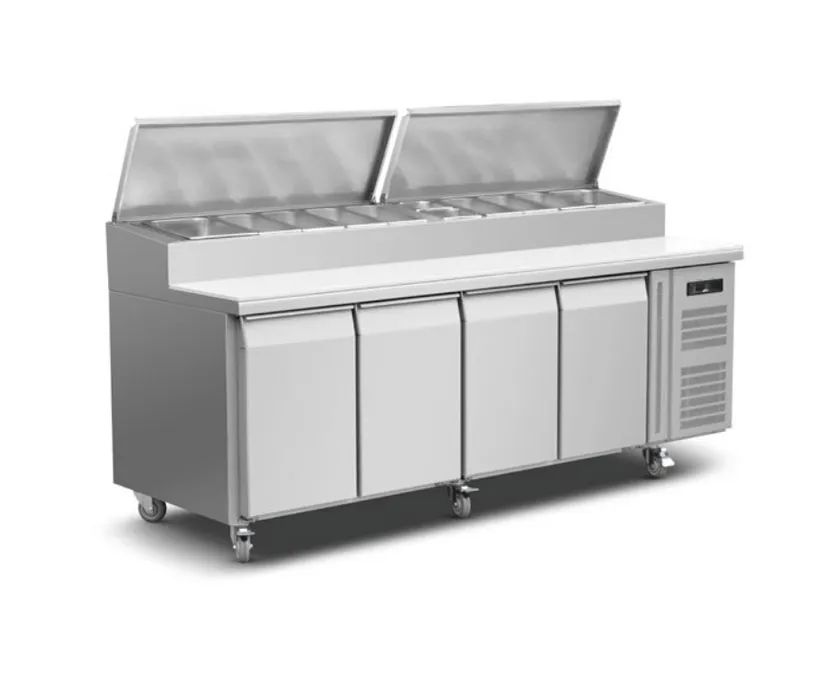Address
1F, Building 13, No.1881, Zhengbo Road, Lin-gang Special Area, China (Shanghai) Pilot Free Trade Zone
Work Hours
Monday to Friday: 8AM - 5PM
Address
1F, Building 13, No.1881, Zhengbo Road, Lin-gang Special Area, China (Shanghai) Pilot Free Trade Zone
Work Hours
Monday to Friday: 8AM - 5PM

Pizza prep tables are unwitting heroes in every pizzeria, tirelessly contributing to the creation of delicious pies.
Unfortunately, their high usage and messy nature may lead to neglect or inefficiency if cared for improperly.
To keep it running in top condition, there are some essential maintenance practices and tips designed to maintain pizza prep tables so as to save you time while maintaining an efficient kitchen environment.
Maintain a smooth operation of both pizza prep tables and sandwich prep tables by prioritizing regular coil cleanings.
This practice helps avoid expensive compressor burnouts while assuring optimal temperatures for food safety.
One of the primary concerns with pizza prep tables is infiltrating dough and dust into their compressor, and routine weekly cleaning must take place to stop this scourge from creating havoc.
Cleanliness and maintenance efforts are also key in combatting corrosion caused by pizza sauces. You shall make a point to regularly inspect and clear away food debris from around your pizza prep table’s interior surface.
Condenser coils found on pizza prep tables can quickly become filthy due to caked-on flour or grease deposits, necessitating chemicals for thorough cleaning of these coils that often span 3-4 inches thick.
For deep cleaning coils with embedded dough use a coil brush as this may dislodge any embedded pieces and free any embedded dough pieces from their slots.
Turn off your unit before applying water; after spraying on some, allow them to air dry for 10-15 minutes before inspecting with a flashlight to confirm they’re completely clean.
Pizza preparation involves multiple elements – flour, tomato sauce, and an array of toppings – that may wreak havoc with your prep table – be ready for this when caring for it!
Pizza prep tables often store tomato and sauce products on top, which could potentially release harmful particles into the air and contribute to corrosion issues.
Tables can either have storage rails or not; if present, turning them off and wiping them down with hot water to clean can help avoid complications.
Establish a bi-monthly cleaning schedule for your prep tables to prevent food debris build-up, grease buildup, oil residue build-up, and bacterial growth – which will in turn ensure efficient operations while helping lower energy costs.
Strict compliance with local health and safety regulations is absolutely crucial, with more frequent cleaning requirements for certain areas – this promotes cleaner production lines, less waste generation, and improved quality control.
Keep an eye out for signs that your pizza prep table requires servicing, such as condensation and temperature control issues.
Consider that tables typically only last seven years on average and that issues such as poorly sealed doors or worn-out gaskets and hinges could severely hinder their efficiency.
With these comprehensive maintenance guidelines, you’ll ensure your pizza prep table remains at the core of your kitchen, helping ensure food safety, efficiency, and cost savings.